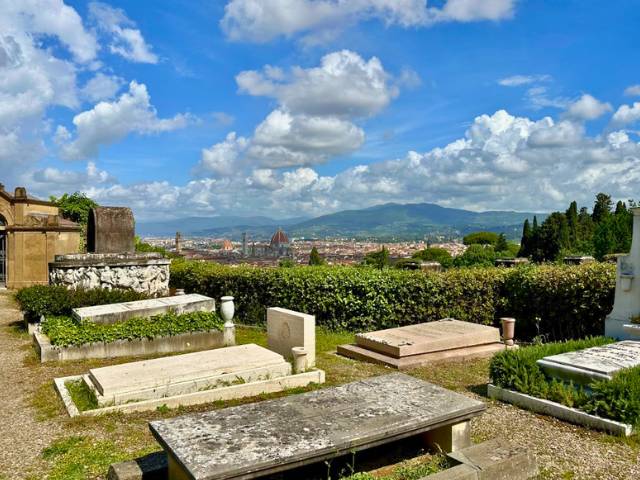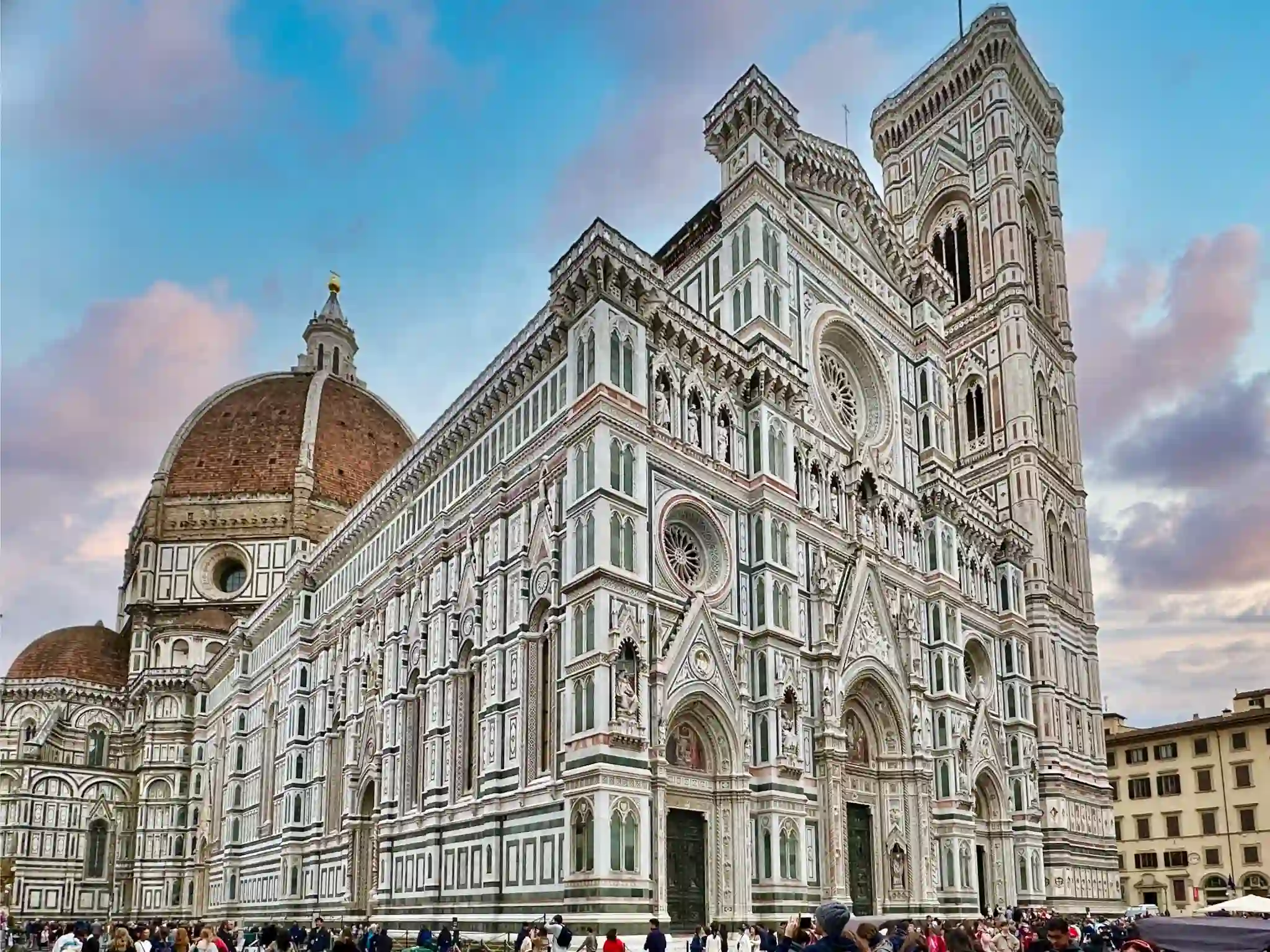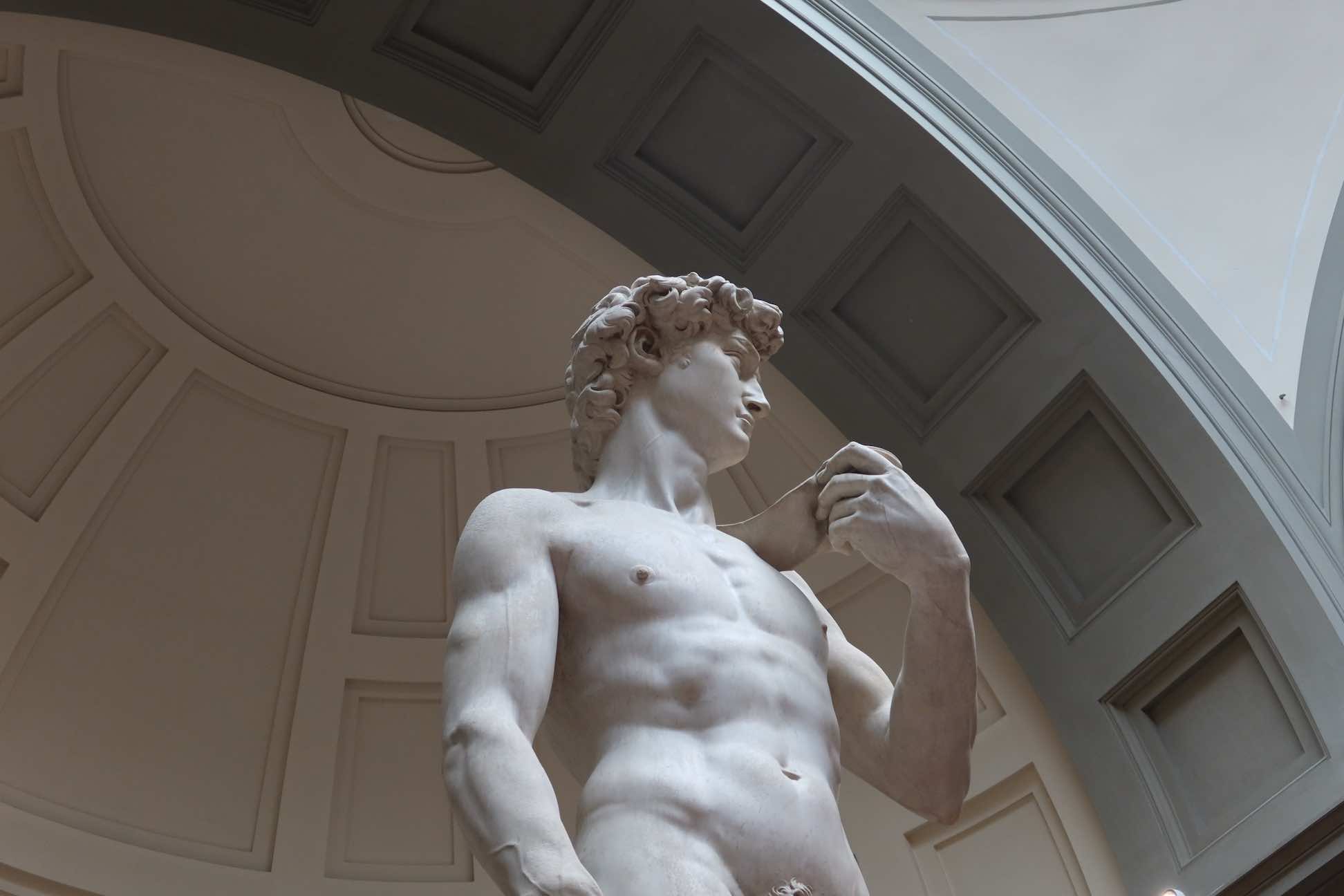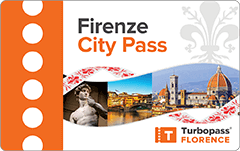- Sign up & get a FREE ebook Subscribe Today!
- Florencewise Home Page
- churches in florence
Discover all the Churches in Florence
It’s no surprise that the Italian city of art has many beautiful churches housing some incredible artworks, but the churches in Florence offer much more.
 Amazing sights, stunning art, rich history - what's not to like about visiting the churches in Florence?
Amazing sights, stunning art, rich history - what's not to like about visiting the churches in Florence?A visit to a church can be as good as any art gallery in Florence, so keep reading for all the details you need.
Where to see some of the best churches in Florence
Churches in Florence aren’t the only places of worship, they are religious buildings, museums and art galleries all rolled into one.
From large, impressive churches to small chapels, Florence has a lot to discover, and the beauty and history inside these churches are unrivaled.
On this page, we'll be talking about:
- The Cathedral of Santa Maria del Fiore and the Duomo complex
- Santa Croce
- Santa Maria Novella
- Basilica di San Lorenzo
- Basilica di Santo Spirito
- San Miniato al Monte
- Other interesting churches in Florence
Santa Maria del Fiore and the Duomo complex
One of the largest churches in the world and the most famous church in the city, the Duomo of Florence is named Santa Maria del Fiore.
This means 'our lady of the flower' which references the name of the city.
It is a beautiful Gothic church with intricate details in its marvellous exterior.
The church was built on the ruins of a previous church dedicated to Santa Reparata, who is one of the patron saints of Florence, the remains of which can still be viewed in the crypt.
 When visiting the Duomo, be sure to go down into the crypt to see the remains of the original church that stood here
When visiting the Duomo, be sure to go down into the crypt to see the remains of the original church that stood hereFlorence was one of the most powerful cities in medieval Italy and a new cathedral that would do justice to the wealth of the city was commissioned in 1294.
Construction lasted nearly two centuries with many architects involved, including Giotto and Filippo Brunelleschi.
Giotto designed the bell tower and Brunelleschi finished the complex with the crowning glory of the project, the magnificent dome for the cathedral.
The complex of the Duomo di Santa Maria del Fiore consists of the cathedral and Brunelleschi’s dome, Giotto’s bell tower, the baptistery of San Giovanni, the crypt of Santa Reparata, and the Opera del Duomo Museum.
Standing right in front of the cathedral and being the oldest religious building in Florence, the baptistery is a fascinating piece of history.
The exact age of the baptistery isn’t known for sure, though it was first mentioned as a minor basilica in 897.
In the centuries past, all Florentines were baptised here but today, just a few young children are baptised here on the first Sunday of every month.
The outer doors are individually decorated, the result of various city competitions, with the Gates of Paradise being particularly stunning.
Although the original doors are now in the Museo del Duomo, there are plenty of original features inside the baptistery to amaze visitors, including mosaics, sculptures and artworks.
Santa Croce
Found on Piazza di Santa Croce, this church was built in the 13th century and is the burial place of Michelangelo, Machiavelli, and Galileo Galilei.
There are 16 family chapels inside the church, which were built by wealthy families who wanted to find favor with the church in the hope of having their sins forgiven.
Most visitors come here to see the tombs of famous residents of Florence, of which there are more than any other church in the city.
There is also a museum onsite which attracts many visitors and can get very busy.
Santa Maria Novella
Santa Maria Novella is one of the most architecturally important Gothic churches in all of Tuscany.
It’s located at Piazza di Santa Maria Novella, and as you approach you’ll see the historic original façade that is part Gothic, with the top half being finished following the strict rules of the Renaissance.
Inside are some incredible works of art, including Giotto’s Crucifix, Masaccio’s Trinity, and the Nativity by Botticelli.
🤙 Roaming in Italy? 📱
Get yourself an Italian eSIM for calls, messages and data when traveling here.
Save on data charges with plans from just 19€ from Holafly - our recommended eSIM provider - click here to find out more.
Basilica di San Lorenzo
This church dates back to the 4th century and is possibly the oldest church in Florence.
The reason it looks a little rustic from the outside, is that the façade of San Lorenzo was never completed.
Located on Piazza San Lorenzo, the inside of the church is also a little bare compared to other churches in Florence, but its beauty lies in its simplicity.
It’s an important church for many reasons, but mainly because this is the burial place of the Medici family.
The Medici Chapels are entered through the back of the church where you’ll find the crypt, the Capella dei Principi, and the New Sacristy.
Basilica di Santo Spirito
Located at Piazza di Santo Spirito, outside the original city walls, this rather solemn church was designed by Brunelleschi in the 15th century, though the façade he envisioned was never completed.
Inside, the meticulous rhythm Brunelleschi used to structure the architectural elements and the flood of natural lights make the church feel serene and peaceful.
 The plain facade was not the original plan for the church, but the death of Brunelleschi left his vision incomplete
The plain facade was not the original plan for the church, but the death of Brunelleschi left his vision incompleteThe crucifix Michelangelo sculpted when he was only seventeen years old before leaving for Rome hangs in the sacristy.
The famous Renaissance painter created the Madonna with Child and Saints for the de'Nerli family in their chapel on the right side of the nave.
Basilica di San Miniato al Monte
It took from the 11th to the 13th century to complete this church, and it was worth the wait, as the views alone from the church above Piazzale Michelangelo, sweeping over Florence below, are magnificent.
The green and white marble of the exterior is elegantly beautiful, and inside the church, there are three naves and a crypt, with frescoes by Taddeo Gaddi.
There are many important people buried in the cemetery beside this church, including the painter Pietro Annigoni and Carlo Lorenzini, the author of Pinocchio.
Check out our top tips for making the most of your time in Florence:
Other interesting churches in Florence
Though most visitors seek out the most famous churches in Florence, there are many other interesting churches to take a look at in the city.
Some of these churches will be quieter than the famous ones and contain some tucked-away secrets of design and artworks.
Santa Maria del Carmine
Located on Piazza del Carmine, don't let the unfinished facade fool you.
Inside, you'll find some of the most important Renaissance frescoes: the famous cycle including the Expulsion from Paradise and the Tribute Money that Massacio created in 1472 for the Brancacci family.
Much of the church was destroyed in a fire in 1771, but the Brancacci chapel survived.
The chapel is accessed through the cloisters, not the main church.
Basilica di San Marco
After returning from exile, in the fifteenth century, Cosimo de'Medici had the run down convent-complex that stood here completely restored and reconstructed.
The church you'll see today dates back to the late 16th century, with an 18th-century neoclassical facade and holds spectacular artworks by Fra Angelico and Fra Bartolomeo.
Orsanmichele
Orsanmichele is a church that has a very unusual history.
There was originally a small oratory here, built on the site of a Roman temple, in the gardens of a monastery.
In the 13th century a grain storage was built on the site, which was turned into a church when an image of the Virgin Mary that was kept here started performing miracles.
Even today you can still see the rings in the ceiling, used to haul heavy bags of grain, and the chutes in the wall which were used to move the grain between floors.
Santissima Annunziata
This Renaissance basilica was founded in the mid-13th century by the same monks who also commissioned Fra Bartolomeo's Annunciation.
The great 'Cloister of the Dead', accessed through a door behind a curtain in the sacristy, is a peaceful place where many artists are buried.
No matter what season you visit Florence, here are 4 things never to leave at home:
Disclosure: If you make a purchase through a link on this page, I may receive a small commission - at no extra cost to you. Thank you for supporting my site!
Santa Trinita
 You could easily walk past this church but the plain exterior gives no hint of the beautiful art inside
You could easily walk past this church but the plain exterior gives no hint of the beautiful art insideBuilt-in the 12th century by Vallombrosian monks, who were already running a convent on this site, this church was originally built in the Romanesque style.
This space is quite solemn and simple, in keeping with the beliefs of the monks and how they lived.
The more elaborate mannerist facade dates back to the late 16th century.
 Ghirlandaio's work in the Sassetti chapel in Santa Trinita is breathtaking!
Ghirlandaio's work in the Sassetti chapel in Santa Trinita is breathtaking!The church features works of art by Ciambue, Neri di Bicci and Pietro Bernini.
San Salvatore in Ognissanti
San Salvatore in Ognissanti was founded in the 13th century by the lay order of the Umiliati Friars, a religious order that processed and traded in wool.
The church is located at Borgo Ognissanti, with convenient access to the river Arno for wool trading.
The Botticelli fresco of St Augustine in his Study is complemented by the fresco by Ghirlandaio of St Jerome in his Study.
Ghirlandaio also painted the magnificent Last Supper, which draws many art lovers and is a truly wonderful thing to see in such a peaceful church.
For a fee, you can also visit the tomb of Botticelli in this church.
Florencewise's Top Travel Resources
Ready to book your trip to Florence? Take a look at these helpful links to companies we use and trust:
- Keep your travel spending simple with the Wise card, which removes all the worry about exchange rates and high transaction fees all over the world
- Search for and book your perfect accommodation
- Our complete guide to what to pack for Florence
- The number one travel accessory, a multi-point travel adapter and voltage converter
- Browse a huge range of tours in Florence and beyond
- Experience unique tours and special access to Florence's most popular sights
- Protect yourself with comprehensive travel insurance
Within this post there are some affiliate links for products and services. For more details about our affiliate policy click here.
Receive the latest Florence news, travel tips, insights and more!
Simply sign-up today for our free newsletter:
We are committed to respecting your data. Click for our Privacy Policy.
Comments? Questions? Suggestions?
Please come over to the private Facebook group and join in the conversation.
You will often find me there, happy to answer your questions / comments!
You will also meet other Florence lovers and experts, too.
What are you waiting for?



























